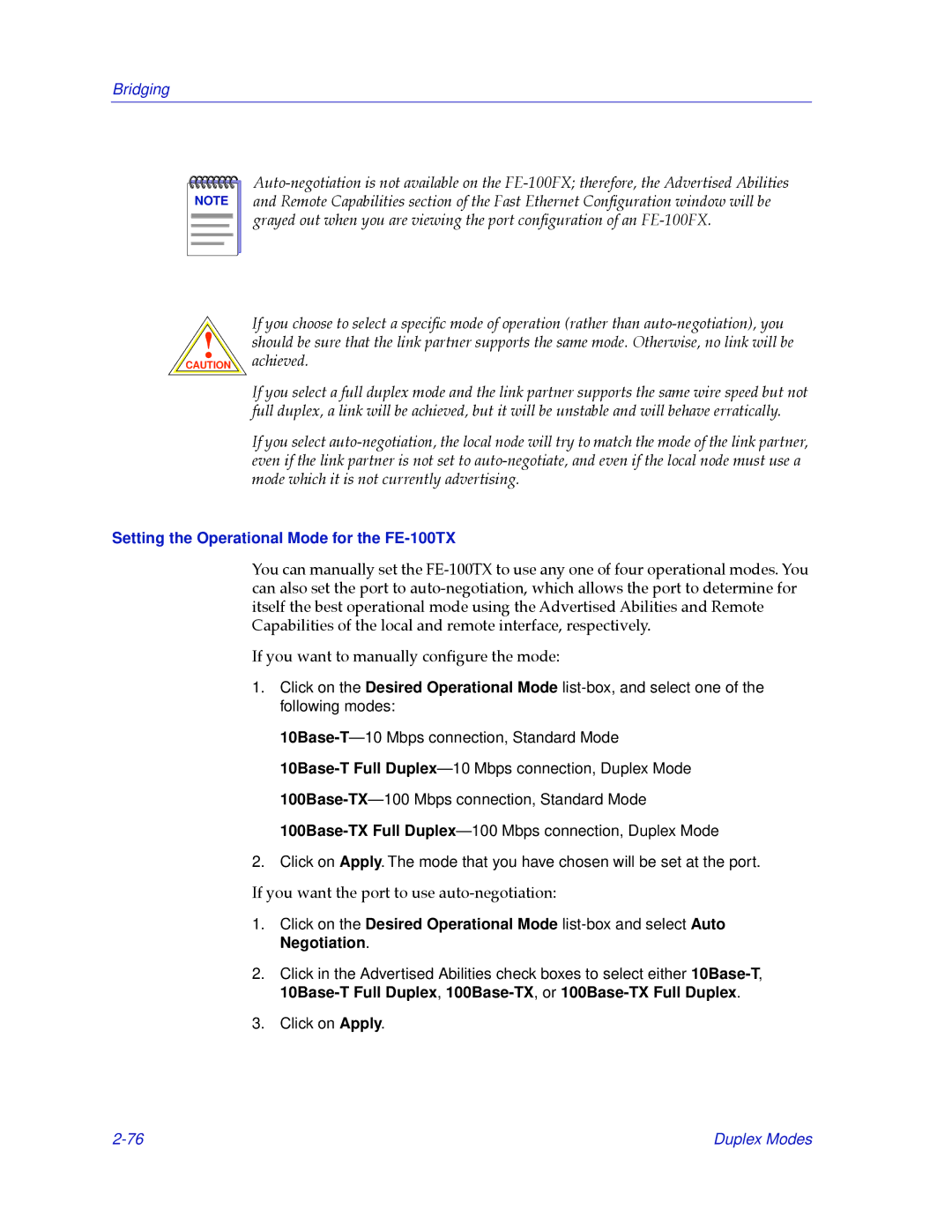Bridging
Auto-negotiation is not available on the FE-100FX; therefore, the Advertised Abilities and Remote Capabilities section of the Fast Ethernet ConÞguration window will be grayed out when you are viewing the port conÞguration of an FE-100FX.
If you choose to select a speciÞc mode of operation (rather than auto-negotiation), you should be sure that the link partner supports the same mode. Otherwise, no link will be achieved.
If you select a full duplex mode and the link partner supports the same wire speed but not full duplex, a link will be achieved, but it will be unstable and will behave erratically.
If you select auto-negotiation, the local node will try to match the mode of the link partner, even if the link partner is not set to auto-negotiate, and even if the local node must use a mode which it is not currently advertising.
Setting the Operational Mode for the FE-100TX
You can manually set the FE-100TX to use any one of four operational modes. You can also set the port to auto-negotiation, which allows the port to determine for itself the best operational mode using the Advertised Abilities and Remote Capabilities of the local and remote interface, respectively.
If you want to manually conÞgure the mode:
1.Click on the Desired Operational Mode list-box, and select one of the following modes:
10Base-T—10 Mbps connection, Standard Mode 10Base-T Full Duplex—10 Mbps connection, Duplex Mode 100Base-TX—100 Mbps connection, Standard Mode 100Base-TX Full Duplex—100 Mbps connection, Duplex Mode
2.Click on Apply. The mode that you have chosen will be set at the port.
If you want the port to use auto-negotiation:
1.Click on the Desired Operational Mode list-box and select Auto Negotiation.
2.Click in the Advertised Abilities check boxes to select either 10Base-T, 10Base-T Full Duplex, 100Base-TX, or 100Base-TX Full Duplex.
3.Click on Apply.

